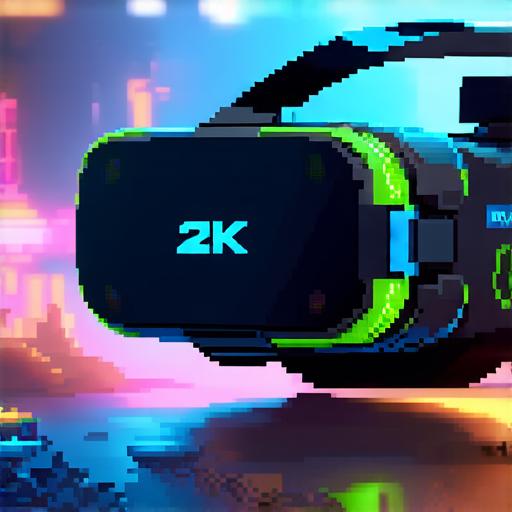Virtual reality (VR) and augmented reality (AR) have revolutionized the gaming industry. These immersive technologies allow players to experience games in ways that were previously impossible, providing a level of interaction and engagement that traditional gaming simply cannot match.
1. Impact on Game Design
The advent of VR and AR has had a significant impact on game design. These technologies have allowed developers to create games that are more immersive, interactive, and engaging than ever before. With VR, players can explore virtual worlds in ways that were previously impossible, interacting with characters and objects in ways that were not possible in traditional gaming.
AR, meanwhile, allows players to overlay digital content onto the real world, creating a hybrid reality where players can experience games while still being able to interact with their surroundings.
One of the most interesting examples of VR game design is “Beat Saber,” a rhythm game that uses motion tracking to allow players to use their body as an instrument. In this game, players use light sabers to slash through blocks and score points by matching their movements to the beat of the music. This game has been a massive success, with millions of players around the world enjoying its unique blend of physical exercise and gaming.
AR games have also seen great success, with one of the most popular examples being “Pokémon Go.” This game uses AR technology to allow players to collect virtual creatures called Pokémon in their real-world surroundings. The game has been a massive hit, with millions of people around the world downloading it and playing it for hours each day.

2. Impact on Player Experiences
The impact of VR and AR on player experiences is perhaps the most exciting aspect of these technologies. With VR, players can feel as though they are truly immersed in a virtual world, with all the sights, sounds, and sensations that come along with it. This level of immersion has led to some truly incredible gaming experiences, from exploring ancient ruins in “Tomb Raider” to battling giant creatures in “Godzilla.”
AR, meanwhile, allows players to experience games while still being able to interact with their surroundings. This hybrid reality creates a unique and engaging experience that can be enjoyed both indoors and outdoors.
3. Impact on the Future of Gaming
The future of gaming is likely to be shaped by VR and AR technologies. As these technologies continue to evolve, we can expect to see even more immersive and interactive experiences that blur the line between game and reality.
This will have a significant impact on the gaming industry as a whole, with developers exploring new ways to create games that are more engaging and memorable than ever before.
One of the most exciting developments in this area is the rise of cloud-based gaming. With cloud-based gaming, players can access games without needing expensive hardware, allowing them to play on a wide range of devices. This will make it easier for people around the world to enjoy immersive VR and AR experiences, regardless of their technical capabilities.
4. Challenges and Concerns
While VR and AR have the potential to revolutionize the gaming industry, they also come with a number of challenges and concerns. One of the main challenges is the high cost of these technologies, which can be prohibitive for many people.
Additionally, there are concerns about the impact of these technologies on player health, particularly in terms of motion sickness and other side effects.
Another concern is the potential for VR and AR to be used for nefarious purposes, such as creating highly immersive and convincing fake environments that could be used for propaganda or other malicious purposes.
